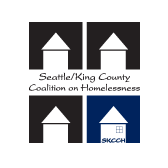By Washington State Senator Jeanne Kohl-Welles (D)
 Throughout the years I have spent in the Legislature, tackling the issues of affordable housing and human trafficking has been of particular importance to me. It is clear why these issues are each important to address, but it is often overlooked how they are so intrinsically linked. Back in 2002, thanks to the leadership of former Rep. Velma Veloria and the Asian & Pacific Islander Women & Family Safety Center, Washington became the first state in the nation to pass specific legislation related to human trafficking, and in 2003 enacted the first state law creating crimes of human trafficking. In all, we have passed 36 bills to mitigate this terrible problem and have established ourselves as a leader in anti-trafficking law both nationally and internationally.
Throughout the years I have spent in the Legislature, tackling the issues of affordable housing and human trafficking has been of particular importance to me. It is clear why these issues are each important to address, but it is often overlooked how they are so intrinsically linked. Back in 2002, thanks to the leadership of former Rep. Velma Veloria and the Asian & Pacific Islander Women & Family Safety Center, Washington became the first state in the nation to pass specific legislation related to human trafficking, and in 2003 enacted the first state law creating crimes of human trafficking. In all, we have passed 36 bills to mitigate this terrible problem and have established ourselves as a leader in anti-trafficking law both nationally and internationally.
By confronting the barriers people face when applying for housing, Washington has also made progress with regard to fair and affordable housing policies. Most recently, we passed two bills to address problems with tenant screening practices, but there is still a lot of work to do. In 2012, the Legislature passed Senate Bill 6315, requiring landlords to provide screening criteria in writing for prospective renters, and listing all of the requirements that will be used to determine eligibility for tenancy. And in 2013, SB 5568 added protections for domestic violence survivors in the Residential Landlord-Tenant Act with regard to screening practices.
What keeps many of our most vulnerable community members without having stable housing is a combination of screening practices for rental applications, rising rent prices, and the lack of funding for supportive services and community organizations that work to provide critical services to survivors of human trafficking.

Capitol building in Olympia, WA
Access to affordable, safe and stable housing is key to combating trafficking. According to the King County Committee to End Homelessness, “Young people experiencing homelessness are vulnerable to being coerced into prostitution and other forms of sexual exploitation.” Approximately 5,000 minors experience homelessness in King County every year, with about 500 working in the sex trade any given night. This is deeply alarming, as individuals without a stable, safe and affordable home are not only more likely to be victims of trafficking, but also are more likely to be re-victimized by their abusers if they are unable to secure safe and stable accommodations. And even though my bill, SB 5482, became law in 2011 (authorizing local governments to use affordable housing funds to provide housing assistance to victims of human trafficking and their families), we did not provide any state funds to meet the additional need.
How screening practices impact survivors of human trafficking
When landlords screen a prospective tenant for a rental application, they generally perform a background criminal records check, credit check and public records check. As a result of a system that treats victims like offenders, many trafficking survivors have criminal records – typically related to prostitution – that can inhibit their ability to retain housing, even if the conviction was many years ago. While the Legislature passed House Bill 1292 in the 2014 session – to vacate prostitution records for trafficking survivors – there are still concerns regarding tenant screening, especially related to criminal and civil records that are easily accessible and cause tenants to be wrongfully denied housing.
What housing affordability means for struggling individuals and families
Housing affordability is a serious concern for many in our community. It is increasingly problematic for seniors on a fixed income, foster youth aging out of the system, immigrants, refugees and the mentally ill. For trafficking survivors who are working to gain new life skills and employment training, housing affordability is also critical. Oftentimes, if an individual has been forced into labor, she or he has not been allowed to attend school – sometimes for decades – and has not had opportunities for work training.
Why isn’t there more funding for services that support trafficking survivors?
With an international land border, being the closest state in mainland U.S., and having numerous large ports to which people are brought from Asia, Washington continually fights an uphill battle to eliminate human trafficking. Protecting human services funding has been ever more difficult in a divided state Legislature still working its way out of the Great Recession – and it has been very challenging to reach agreement on increasing the dollars directed to critical services that prevent and abate human trafficking.
In part due to these challenges, grassroots organizations in our state – particularly ones that provide direct services and support to survivors – are a lifeline for those trying to escape sexual or labor exploitation. And even though anti-trafficking is an issue that is far less partisan than most, the underground nature of the problem and significant budget restraints mean we still struggle to bring much-needed relief to survivors at the state level.
Where we go from here
Legislative efforts to combat trafficking are increasingly turning toward supporting survivors and holding abusers accountable for propagating such crimes. For example, HB 1791 passed this year, adding sex trafficking to the existing definition of sex crimes, and was amended with language from a bill of mine (SB 6017) to allow local law enforcement to recoup costs of investigating crimes related to prostitution and sexual exploitation of minors. Another bill, SB 6339, introduced by my colleague Sen. Karen Fraser, created the crime of ‘coercion of involuntary servitude’ – including the withholding of documentation of a person’s immigration status – and established this crime as a felony.
These are important measures, but it is clear there is still a great amount of work to be done. I am continuing to work on finding solutions to these problems throughout this summer and fall and into the next legislative session.
If you have questions, concerns or ideas you’d like to share, I encourage you to contact me at jeanne.kohl-welles@leg.wa.gov or 206.281.6854. You may also visit my office at 3131 Western Avenue, Suite 421, Seattle, WA 98121.
Washington State Senator Jeanne Kohl-Welles (D) represents the 36th Legislative District (including the Queen Anne, Interbay, Ballard, Magnolia, Belltown, and parts of the Phinney Ridge and Greenwood neighborhoods). She has been the sponsor of many affordable housing and anti-trafficking bills in the Washington State Senate, helping make us the leading state in the country in efforts to eliminate human trafficking. Senator Kohl-Welles received Seattle Against Slavery’s 2010 Lincoln Freedom Award for her anti-trafficking legislative efforts, February 2013 Legislator of the Week, and the 2011, 2012 and 2013 Housing Hero Award from the Washington Low-Income Housing Alliance and Seattle/King County Coalition on Homelessness. She has served in the Washington State Senate since 1994, following three years in the state House of Representatives.
Filed under: Political Action | Tagged: affordable housing, ending homelessness, human trafficking, Residential Landlord-Tenant Act, Senator Jeanne Kohl-Welles, Washington state legislature | 1 Comment »




 Throughout the years I have spent in the Legislature, tackling the issues of affordable housing and human trafficking has been of particular importance to me. It is clear why these issues are each important to address, but it is often overlooked how they are so intrinsically linked. Back in 2002, thanks to the leadership of former Rep. Velma Veloria and the
Throughout the years I have spent in the Legislature, tackling the issues of affordable housing and human trafficking has been of particular importance to me. It is clear why these issues are each important to address, but it is often overlooked how they are so intrinsically linked. Back in 2002, thanks to the leadership of former Rep. Velma Veloria and the 






























